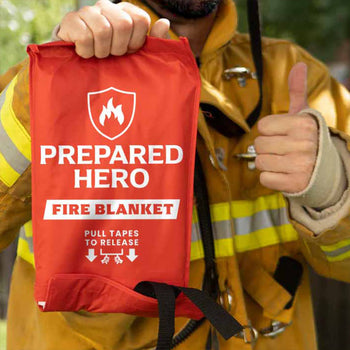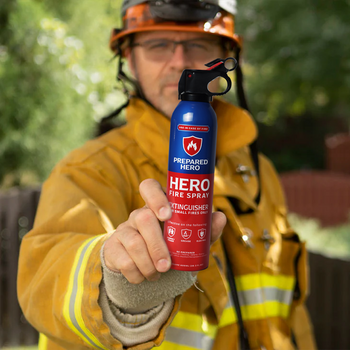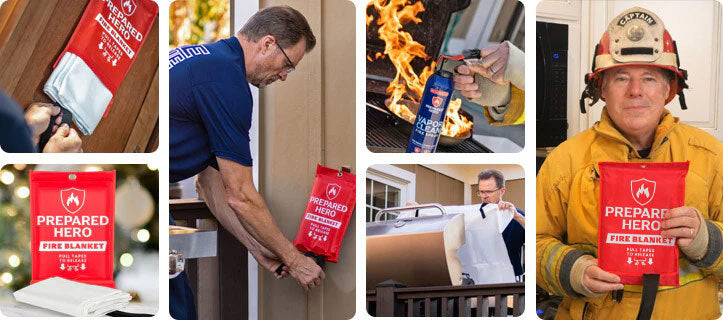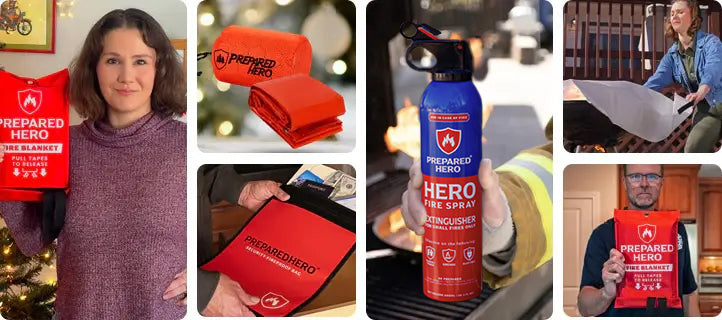Where you put your smoke detectors matters just as much as installing them. Proper placement makes sure they can detect...
Exit signs might seem like background noise in a building, but they play a huge role in keeping people safe. When an emergency hits, they guide everyone out fast and help first responders. In this guide, we’ll break down everything you need to know about exit signs so you know exactly what to do.
Why You Need Exit Signs

Here are the top reasons why every building needs exit signs:
1. They Light the Way Out
When an emergency hits, like a fire or power outage, panic sets in fast. The lights might go out. Smoke can fill the air. People lose their sense of direction. Exit signs help cut through that chaos. Their bright, clear glow gives people a way to find the nearest exit, even when everything else is dark or confusing.
2. They’re Legally Required
Exit signs aren’t just a nice safety feature; they’re required by law. Building codes demand them in most commercial and public places. If you own a business or manage a property, you need to make sure your building meets those rules. Not having proper signs could cost you big in terms of safety and fines. Find out more about exit route requirements here.
3. They Help First Responders
Exit signs aren’t just for the people trying to get out. They also help emergency crews find their way in. Firefighters, paramedics, and other responders rely on those signs to locate doors and hallways fast. This makes a big difference when seconds matter.
4. They Reduce Confusion and Injury
In stressful situations, people don’t always think clearly. Even in buildings they know, they can get disoriented. Exit signs help guide everyone (workers, customers, visitors) away from danger without relying on memory or guesswork.
5. They’re Part of Basic Safety
Exit signs aren’t optional. They’re a basic safety must-have. Whether it’s a warehouse, office, nightclub, or store, every space with people in it needs clear, working exit signs.
How to Turn On an Exit Sign
Most exit signs should already be on because they’re built to stay lit all the time. If yours isn’t lighting up, it likely means something’s wrong. First, check if it’s hardwired to your building’s power. If it’s not lighting up, the issue could be a tripped breaker, a dead battery, or a blown bulb.
Some exit signs run on batteries during outages. Press the test button (usually found on the side or bottom) to see if the backup system works. If nothing happens, the battery probably needs to be replaced.
There are also exit signs that use tritium. They don’t need batteries, but they eventually dim and need to be replaced after a few years.
Lastly, some signs have dip switches. These let you choose if the sign stays on all the time or only turns on during a power cut. Always follow the manufacturer’s instructions for setup and safety checks.
Types of Exit Signs

Exit signs aren’t all the same. They come in different styles, depending on how they light up, where they’re used, and what extra features they offer. Here are the different types of exit signs:
1. Based on How They Light Up
Here are the types of exit signs based on how they light up:
Standard Exit Signs
These are the usual red or green “EXIT” signs you see in most buildings. They stay lit and are hardwired into the building’s power system.
Photoluminescent Signs
They glow in the dark after absorbing light. They also don’t need electricity, so they’re great as a backup during power outages.
Self-Luminous Signs
These use tritium gas to glow. They don’t need wires or batteries, and they can last for years without any power source.
LED Exit Signs
LED exit signs are energy-efficient and long-lasting. They’re also more common in newer buildings.
2. Based on Features and Use
Here are the types of exit signs based on their features and use:
Combo Exit Signs
These signs have built-in emergency lights along with the “EXIT” label. They’re great during blackouts because they light up the way and help people see where to go.
Dynamic Exit Signs
These signs can flash or change direction depending on the situation. They’re helpful in big places where some exits might get blocked.
ADA-Compliant Signs
These include Braille so people with vision loss can read them by touch. It makes exits easier to find for everyone, not just those who can see clearly.
3. Based on the Environment
Here are the types of exit signs based on the environment:
Wet or Outdoor Use Signs
These are designed to handle rain, moisture, and rough conditions. They’re perfect for pools, parking garages, or outdoor areas.
Vandal-Resistant Signs
They’re built tough for public spaces like schools or transit stations, where signs easily get damaged.
4. Based on Where They're Mounted
Here are the types of exit signs based on where they’re mounted:
Ceiling or Wall Signs
Most signs are either placed on the ceiling or flat against the wall, depending on what’s most visible.
Recessed Signs
Recessed signs are built into the wall or ceiling for a cleaner look in upscale spaces.
Exit Sign Maintenance
Keeping exit signs in good shape is more important than most people think. It’s not just about following the rules. These signs help people find the way out fast during an emergency.
Start by checking them every month. Look for cracks, loose wires, or dirt that might block visibility. Then, use the test button to make sure the lights work and the backup battery kicks in. You should also run a full 90-minute battery test once a year to see if it can handle a real power outage.
If the battery’s old or weak, swap it out (usually every 4 to 5 years). Burned-out bulbs or dim lights should also be replaced. Make sure the sign is mounted securely to avoid damage. In addition, keep records of all checks and fixes for safety inspections. Cleaning the signs regularly helps, too. If your building has a lot of signs, consider self-testing models to save time.
Should Exit Signs Be Red or Green?

A lot of people ask if exit signs should be red or green. The answer is, it depends on where you are and what the building needs. For example, red has been the go-to for a long time in the US. It's bright, grabs attention, and is tied to emergency signals. However, green is gaining ground, especially since it's linked to safety and the idea of “go.” That makes sense in a place where you're trying to guide people to safety.
International standards, like ISO (International Organization for Standardization), prefer green for this reason. Green signs also tend to show up better in smoky conditions, while red can be clearer in well-lit rooms.
There’s no strict rule from OSHA (Occupational Safety and Health Administration) or NFPA (National Fire Protection Association) that says which is better. Local codes usually decide what’s required. Some places even allow other colors, like orange. So, while both red and green are okay, the best choice really comes down to visibility, setting, and local rules. Find out more about why exit routes should follow strict criteria here.
What Is the OSHA Code for Exit Signs?
The OSHA code for exit signs is found in 1910.37(b) (4), (6), and (7). It lays out the basic rules for how exit signs should look and function. First off, the word “EXIT” must be clearly visible. The letters should be at least 6 inches tall, and the strokes of each letter must be three-fourths of an inch wide. Signs also have to be well-lit, either with a reliable light source or a self-luminous option.
OSHA also says exit routes must be free from obstructions, and the signs must be distinct in color so people can easily spot them during an emergency. If you're using symbols, like the ISO running man, you can place them next to the word “EXIT” as long as they meet visibility and lighting rules.
Some older signs might not meet the current size standards, but OSHA sees these as de minimis violations, meaning they're not a big deal and don’t need correction, especially if they follow older guidelines.
What Is the Difference Between an Exit Sign and an Emergency Exit Sign?

Exit signs and emergency exit signs both help people get out of a building safely, but they’re not exactly the same. Exit signs guide you along the normal way out, like down a hallway or through a stairwell. You’ll spot them along your path, showing you where to go.
On the other hand, emergency exit signs point to doors used for emergencies only. These doors often stay locked during working hours or set off an alarm if opened. They’re also usually found at the end of a hallway or in areas where the regular way out might not be safe during a fire or power outage.
So here’s the simple difference: exit signs lead the way, while emergency exit signs mark the actual emergency doors. Both are important. One helps you move in the right direction, and the other helps you get out fast when every second counts.
What Are the Standards for Exit Signs?
Exit signs have to meet strict standards to make sure people can safely find their way out during an emergency. First off, they need to be lit at all times, even during a power outage. That’s why many have backup batteries that keep them glowing for at least 90 minutes. The word “EXIT” must be easy to read, with letters at least six inches tall and ¾-inch wide.
Signs should be placed at every exit, along hallways, stairwells, and anywhere someone might need guidance. They also need to be visible from every angle, so no furniture or walls should block them. In some cases, low-level signs mounted close to the floor in case smoke makes it hard to see higher up are required.
Some signs have directional arrows to help when the exit path isn’t obvious. And of course, all signs must follow codes like NFPA 101, OSHA, and IBC (International Building Code) to stay compliant and keep everyone safe.
What Is the Symbol for Exit?

The symbol for an exit is usually a running man figure and an arrow showing the direction to the nearest exit. It’s designed to be simple and easy to understand, even when people are in a hurry or there’s low visibility. The running man tells you to move fast toward safety, and the arrow points the way.
In the US, exit signs might just say “EXIT” in big, red, or green letters. But internationally, especially in Europe, you’re more likely to see the running man and arrow without any text. The sign’s colors are important, too. Green backgrounds with white symbols are the standard because they’re easier to spot in emergencies.
These signs are placed above doors, near stairwells, and at hallway intersections. Wherever you are in a building, you should be able to spot at least one. The goal is simple: help everyone find their way out fast and safely when it counts.
How Should Exit Signs Be Marked in a Workplace?
Exit signs need to be clear, visible, and easy to follow in workplaces. Every exit must be marked with a sign that simply says “EXIT” in big, legible letters at least 6 inches high. These signs should always be lit, even during a power outage. If the path to the exit isn’t obvious, arrows or extra signs need to point the way. You also can’t block exits with furniture, equipment, or decorations. Dead ends, locked doors, or confusing hallways are not allowed as well.
If a doorway looks like an exit but isn’t, it has to be marked with something like “NOT AN EXIT” or labeled with what it really is. During construction or repairs, exit paths must stay clear and safe, and alarms must work properly to alert employees in emergencies. The goal is simple: people should know exactly what to do when things go wrong. Find out more about why workplaces need emergency exits here.
Conclusion
Exit signs are not just decor. They help save lives. Exit signs guide people to safety when there’s an earthquake, fire, gas leak, or the like. However, you just can’t put up random exit signs. They have to be lit, visible, easy to read, and regularly checked. So, stay on top of your exit signs if you own or manage a building. Stay prepared, hero!


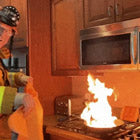 Fire
Fire Safety
Safety Survival
Survival Protection
Protection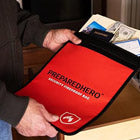 New
New
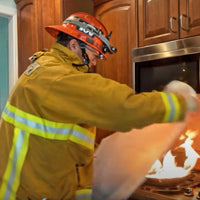 Fire
Fire Safety
Safety Survival
Survival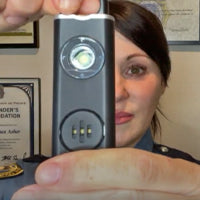 Protection
Protection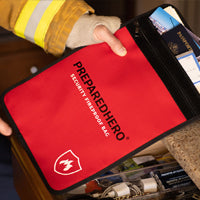 New
New
